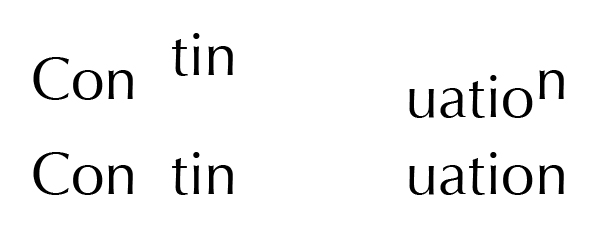
Pass the Gestalt – Continuation
Let’s continue our discussion of Gestalt Theory, shall we?
Have you ever wondered why some design approaches seem more coherent, connected or unified than others? May it’s because the designer has used the Gestalt principles to bring together or visually connect the design elements. A good example of this is CONTINUATION.
Here are two loose definitions of Continuation: “Elements arranged on a line or curve are perceived to be more related than elements not on the line or curve.” Or, “Continuation occurs when the eye is compelled to move through one object and continue to another object.”
Try to imagine that the written word was not be arranged in a straight line, but scattered across the page. It would obviously be impossible to read. It is the theory of Continuation that allows us to read a common sentence or paragraph because the words of the sentence “continue” one word after another forming a straight line.
Continuation can also be implied, by aligning the edges or centers of two or more objects which creates a sense of unity and motion. Another way to apply Continuation is to set up a pattern on one side of a page and continue the pattern on the direct opposite side of the page. See examples below:

As you can see, the top illustration is not a good example of Continuation. The eye is forced to travel across, up, across again, then down and finally up again.
The bottom illustration is a good example because the eye moves smoothly in a straight line forming the word Continuation as the eye travels from left to right.
Hopefully, that’s was just enough information to get you to investigate Gestalt Theory in more depth. Be sure to check back again soon and we will discuss another Gestalt Principle known as Closure.
Comments are closed here.